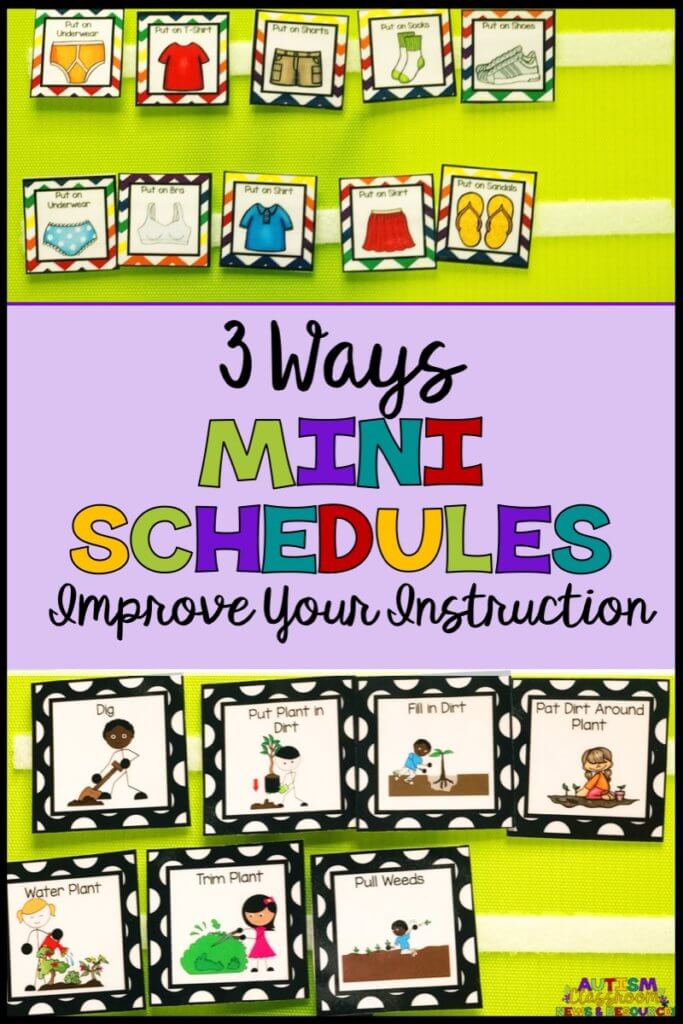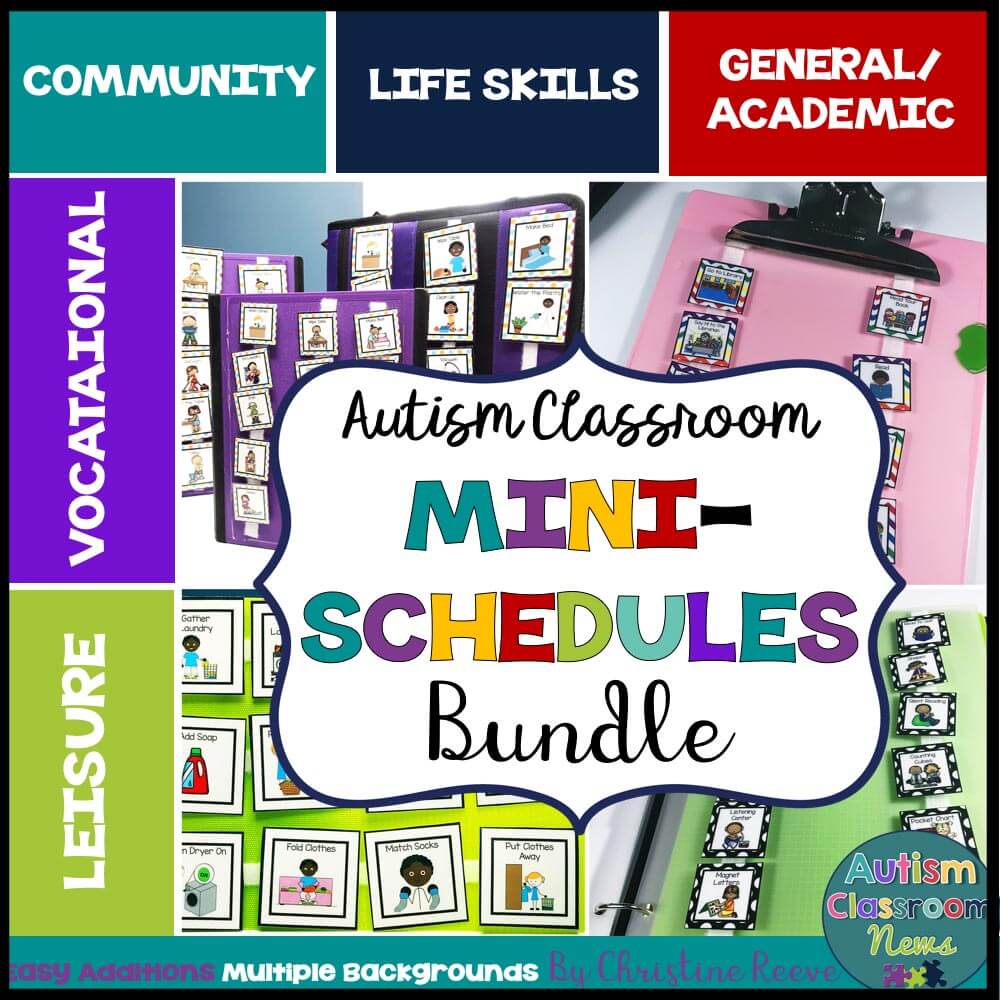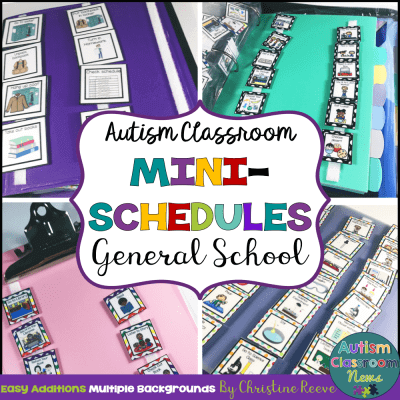Sharing is caring!

Mini schedules are a type of visual schedule that often get forgotten in the classroom. We have so many visual supports that we sometimes think just the daily schedule is enough. We sometimes talk about mini-schedules as task analysis schedules or teaching schedules.
If you have followed the blog or podcast for any length of time, you know I’m a huge fan of visual supports of all kinds. I also think that when things are changing rapidly, as they are in Fall 2020 when this was recorded, that increasing visuals can reduce stress.
What Are Mini Schedules?
Mini-schedules break down activities within the daily schedule. They can break the activities down in 2 primary ways. It could be breaking down the individual steps. So, a mini-schedule to wash hands that we use in many of our classrooms serves as visual support for the task analysis of the skill.

![Task Analysis Schedule for Washing hands [sitting by a sink]. 3 Reasons You Need Mini Schedules in the Special Ed Class Episode 55 Autism Classroom Resources Podcast](https://autismclassroomresources.com/wp-content/uploads/2020/10/Task-Analysis-Schedule-1024x536.png)
A mini-schedule could also be used to depict shorter activities within a larger scheduled activity. For example, a morning meeting schedule that shows we are going to sign in, sing a song, and read a story
Highlights of Episode 55 Mini Schedules
Read the rest of the post or listen in the box at the top of the page. Grab the free download at the bottom of the page.
- Find out why visual schedules are useful for more than just students with autism
- Discover why we should use them in every classroom
- Find out how they encourage nonverbal prompting
- Mini schedules (and schedules) aren’t just for the students, they help staff
- And find out how and why they help to build your students’ independence
Looking for Mini-Schedule Visual Supports?
Those are just some ways that mini-schedules can help make students both faster learners and more independent at a variety of functional skills. If you are looking for mini-schedules you can print and use, check out my mini-schedule bundle on TpT.
sign up for free tips each week in your inbox and Grab 2 free mini-schedules for fall from the resource library

There are 2 mini-schedules included in this set, each with 5 different backgrounds.
Grab them from the Free Resource Library. Click below to navigate or join the free library.
sign up for free tips each week in your inbox and Grab 2 free mini-schedules for fall from the resource library

There are 2 mini-schedules included in this set, each with 5 different backgrounds.
Grab them from the Free Resource Library. Click below to navigate or join the free library.













